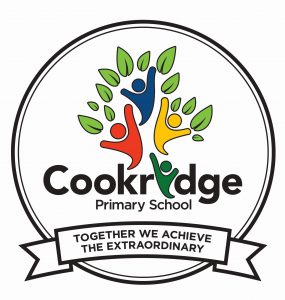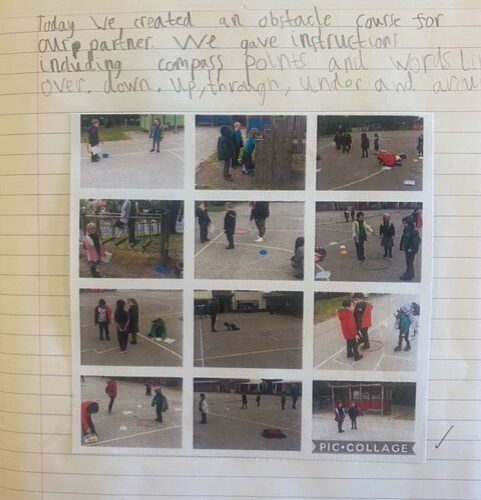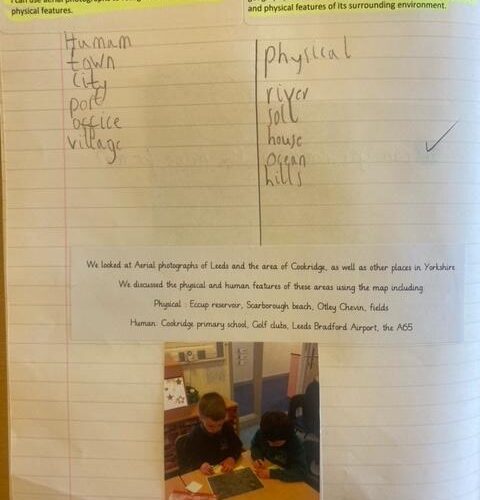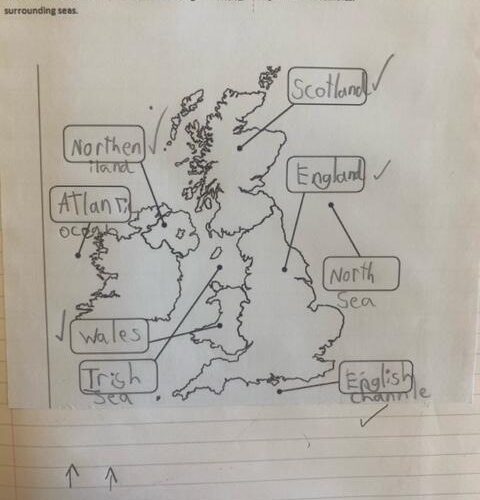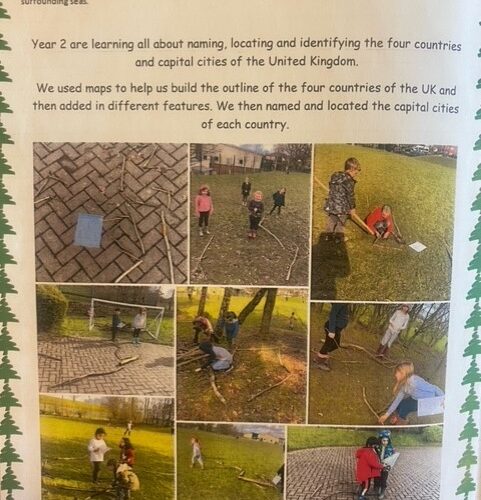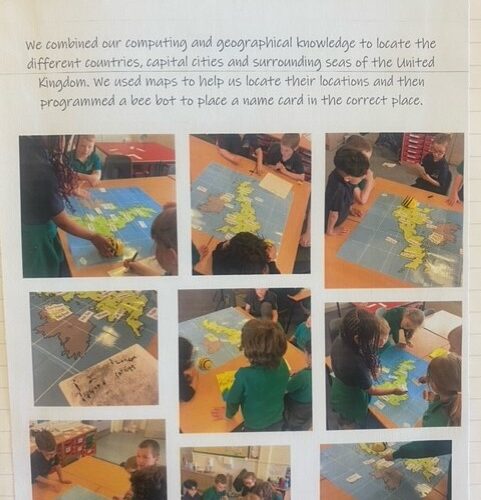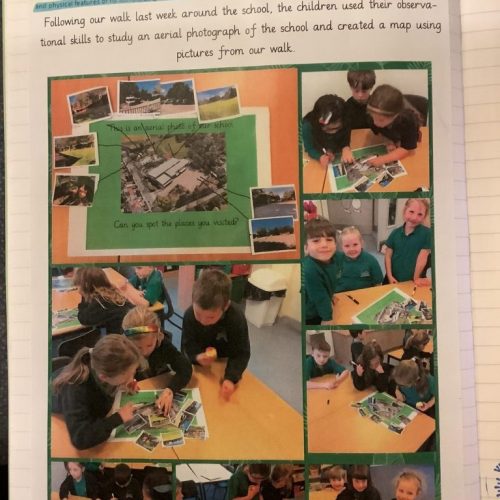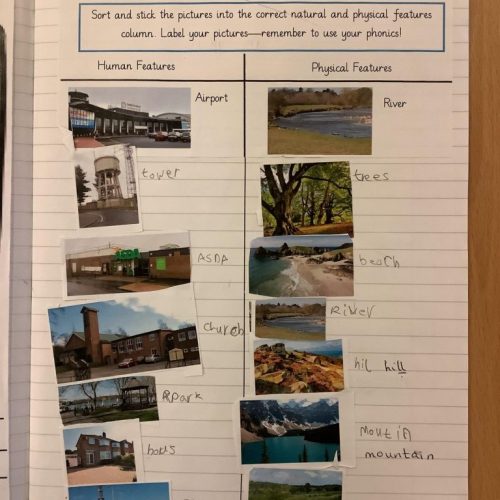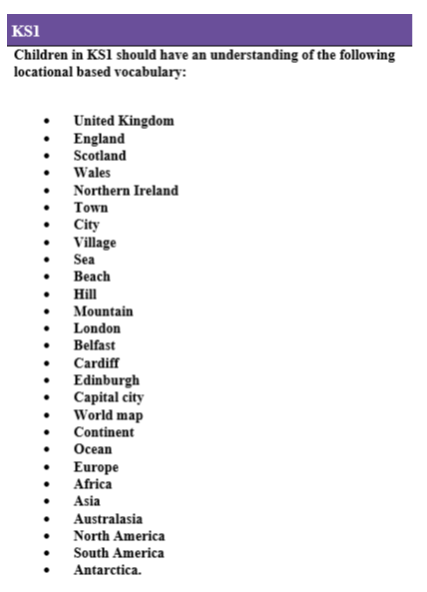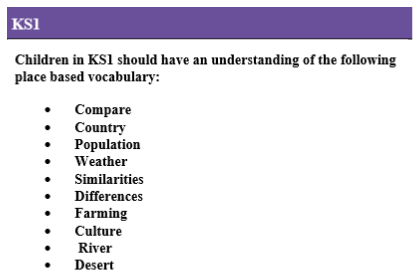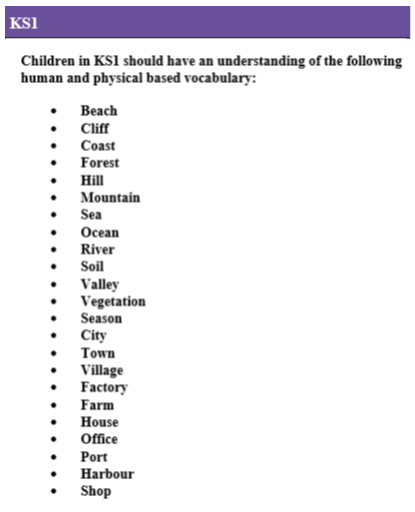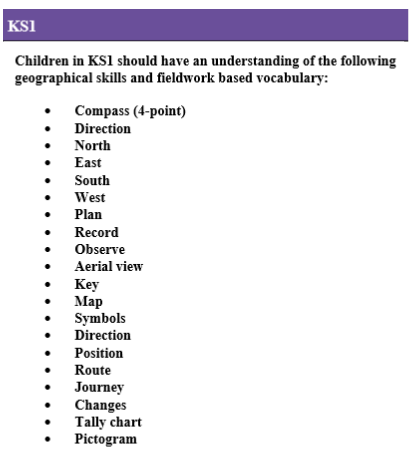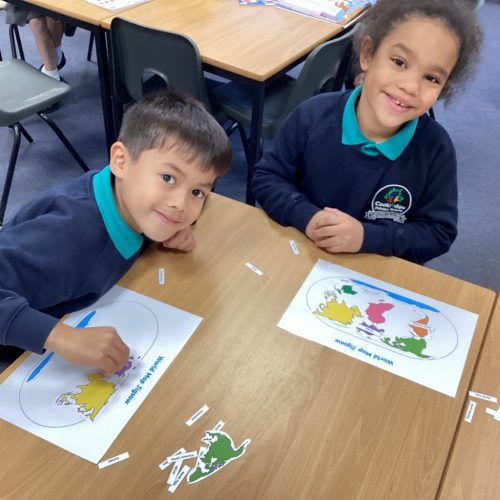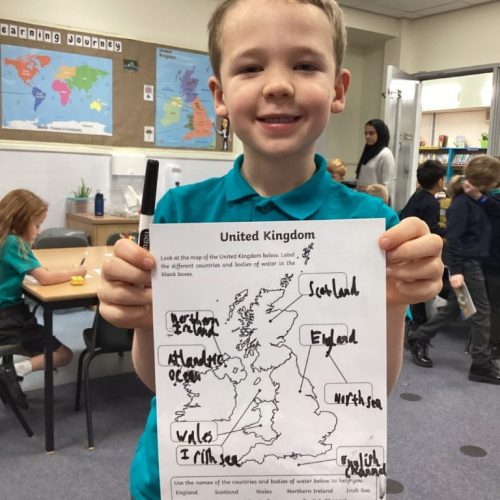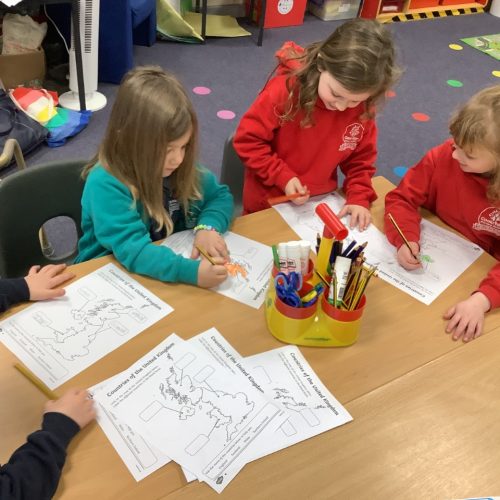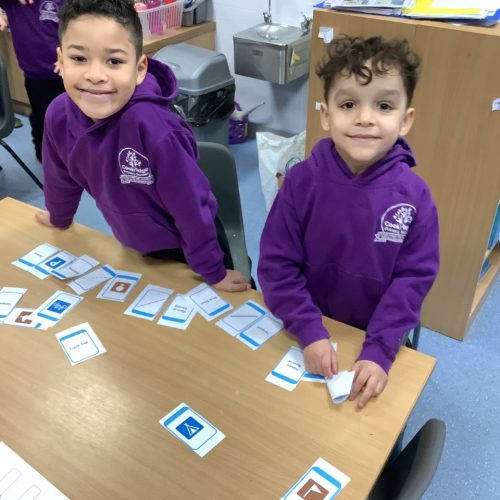| Children can: | |
| a | Name and locate the world’s seven continents and five oceans. |
| b | Name and locate the four countries and capital cities of the United Kingdom. |
| c | Identify Kingdom and its surrounding seas. characteristics of the four countries and capital cities of the United. |
Year 2 – Geography
YEAR 2 - Examples of 'Expected' in the core skill of - Locational Knowledge
Locational Knowledge - Core Skills
YEAR 2 - Examples of 'Expected' in the core skill of - Place Knowledge
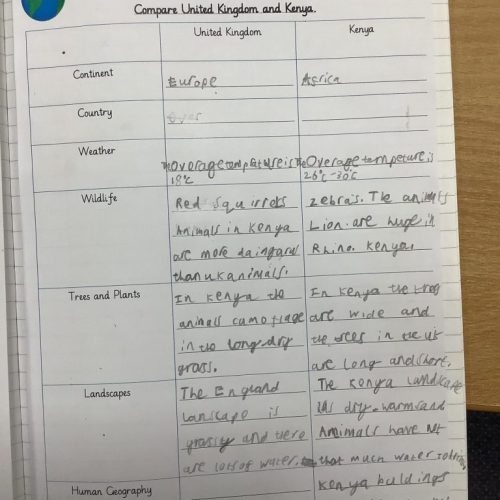
Place Knowledge - Core Skills
| Children can: | |
| a | Understand geographical similarities and differences through studying the human and physical geography of a small area of the United Kingdom. |
| b | Understand geographical similarities and differences through studying the human and physical geography of a small area in a contrasting non-European country. |
YEAR 2 - Examples of 'Expected' in the core skill of - Human and Physical Geography
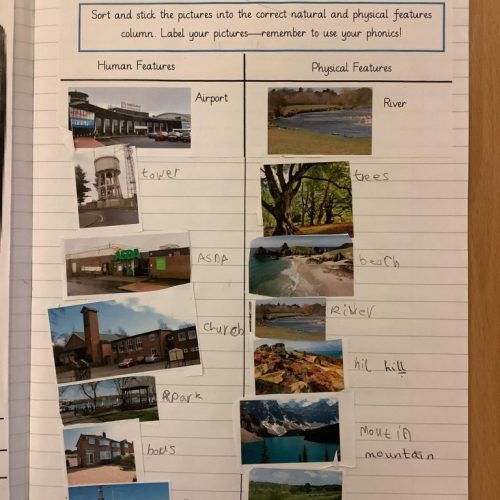
Human and Physical Geography - Core Skills
| Children can: | |
| a | Identify seasonal and daily weather patterns in the United Kingdom. |
| b | Identify seasonal and daily weather patterns in the location of hot and cold areas of the world including the North and South Poles. |
| c | Geographical vocabulary: key physical features, including: beach, cliff, coast, forest, hill, mountain, sea, ocean, river, soil, valley, vegetation, season and weather. |
| d | Geographical vocabulary: key human features, including: city, town, village, factory, farm, house, office, port, harbour and shop. |
YEAR 2 - Examples of 'Expected' in the core skill of - Geographical Skills and Fieldwork
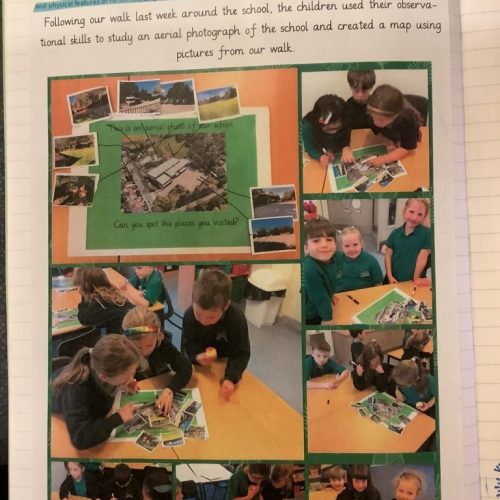
Geographical Skills and Fieldwork - Core Skills
| Children can: | |
| a | To use maps, atlases and globes to identify key features of the United Kingdom as well as the countries, continents and oceans studied at this key stage. |
| b | To use simple compass directions (North, South, East and West) as well locational and directional language. |
| c | To use aerial photographs and plan perspectives to recognise landmarks and basic human and physical features. |
Fluency examples from KS1:
